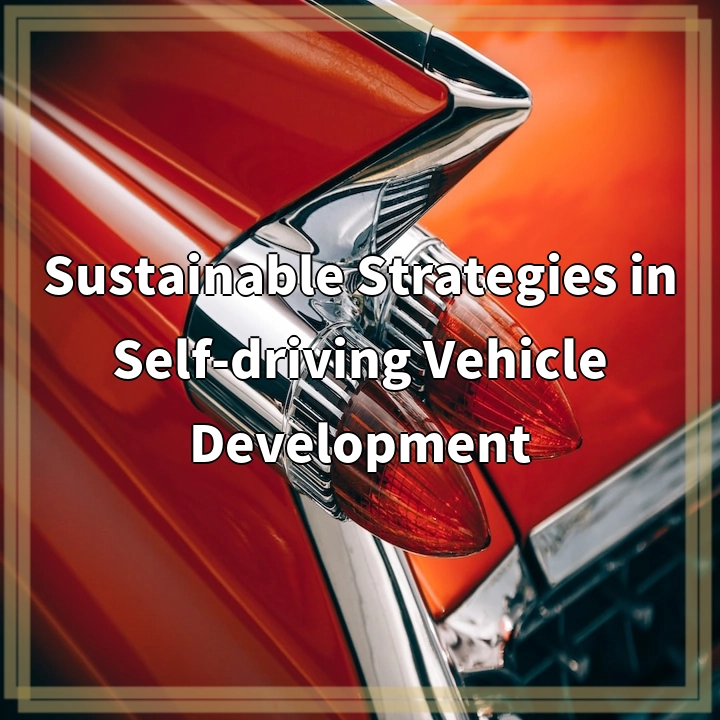
What is Sustainable Strategies in Self-driving Vehicle Development?
Self-driving vehicles, also known as autonomous or driverless cars, are revolutionizing the transportation industry. They have the potential to provide numerous benefits, such as improved safety, increased efficiency, and reduced traffic congestion. However, along with these advancements, the concept of sustainable strategies in self-driving vehicle development has emerged.
Real-world Problems Associated with Sustainable Strategies in Self-driving Vehicle Development
1. Energy Consumption and Environmental Impact
While self-driving vehicles offer the potential to optimize transportation systems, there are concerns about their energy consumption and overall environmental impact. Increased reliance on autonomous cars could lead to a surge in energy consumption, particularly if the majority of these vehicles are powered by fossil fuels.
2. Ethical Dilemmas and Decision-making Algorithms
Self-driving vehicles operate using complex algorithms that make split-second decisions on the road. However, these decision-making algorithms raise ethical dilemmas. For example, if an accident is inevitable, how should the vehicle prioritize the safety of its occupants versus the safety of pedestrians or other drivers?
3. Technological Dependence and Cybersecurity Risks
Self-driving vehicles rely heavily on advanced technologies, including sensors, cameras, and complex computer systems. This technological dependence poses cybersecurity risks, as hackers could potentially infiltrate these systems and gain control over the vehicles. Ensuring the security and integrity of self-driving vehicles is crucial to prevent unauthorized access and potential accidents.
4. Job Losses and Economic Disruption
The widespread adoption of self-driving vehicles has the potential to disrupt numerous industries, particularly those reliant on human drivers, such as trucking and ride-sharing services. This could result in a substantial loss of jobs and significant economic impacts for individuals and communities that depend on these industries.
5. Infrastructure and Regulatory Challenges
The deployment of self-driving vehicles requires significant infrastructure upgrades. Roads, traffic management systems, and charging stations need to be adapted to accommodate autonomous vehicles. Additionally, there is a need for comprehensive regulations to address safety standards, liability issues, and the integration of self-driving vehicles with traditional transportation systems.
In conclusion, sustainable strategies in self-driving vehicle development aim to address the environmental, ethical, technological, socioeconomic, and regulatory challenges associated with the advancement of autonomous cars. These strategies are essential to ensure a future where self-driving vehicles contribute to a sustainable and equitable transportation system.

Solutions to Sustainable Strategies in Self-driving Vehicle Development
1. Promote Energy-efficient and Renewable Power Sources
Encouraging the use of energy-efficient and renewable power sources, such as electric charging stations powered by renewable energy, can help minimize the environmental impact of self-driving vehicles. This includes investing in clean energy infrastructure and integrating renewable energy into the grid.
2. Develop Ethical Frameworks and Decision-making Algorithms
Creating clear ethical frameworks and decision-making algorithms for self-driving vehicles can address the ethical dilemmas they may encounter on the road. This involves engaging experts, stakeholders, and society in discussions to define priorities and ensure that the algorithms prioritize safety and fairness in their decision-making processes.
3. Enhance Cybersecurity Measures
Implementing robust cybersecurity measures is crucial to ensure the safety and integrity of self-driving vehicles. This includes regular software updates, encryption of communication networks, and continuous monitoring to detect and respond to potential cyber threats. Collaboration between industry, governments, and cybersecurity experts is essential in developing and implementing effective cybersecurity protocols.
4. Transition and Retraining Programs
To mitigate the potential job losses resulting from the widespread adoption of self-driving vehicles, implementing transition and retraining programs is essential. These programs can provide affected individuals with opportunities to re-skill or transition to new industries. Governments, educational institutions, and industry stakeholders can collaborate to develop comprehensive programs that support displaced workers.
5. Invest in Infrastructure and Establish Comprehensive Regulations
Investing in infrastructure upgrades, including roads, charging stations, and smart traffic management systems, is necessary to accommodate self-driving vehicles. At the same time, establishing comprehensive regulations that address safety standards, liability issues, and the integration of autonomous technology with existing transportation systems is crucial. Collaboration between policymakers, industry leaders, and relevant stakeholders is essential in developing effective and adaptable regulatory frameworks.
In conclusion, addressing the challenges related to sustainable strategies in self-driving vehicle development requires a multifaceted approach. By promoting energy-efficient and renewable power sources, developing ethical frameworks, enhancing cybersecurity measures, implementing transition programs, investing in infrastructure, and establishing comprehensive regulations, we can foster the sustainable and responsible growth of self-driving vehicle technology.















